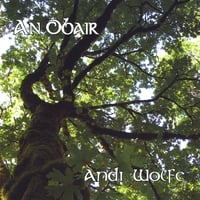The paperwork for repairs were initiated straight away, and my freezer was hauled off and repaired about 6 weeks afterwards, and delivered another two weeks after that. We let it stabilize in the lab before moving half my collections back into it. Unfortunately, it failed again - this time due to the air compressor having a more powerful motor. It blew some debris into a capillary tube feeding into the coolant system. Another two weeks for repair/stabilization resulted, and another scramble to relocate tissue samples.
The freezer was finally ready for the relocation of my samples. When I went to the freezer where my tissues were being stored I found it to be off and non-functional. The circuit breaker for the line it was plugged into had failed. After much investigation, we figured out that one of the night janitors probably plugged a piece of equipment into the spare outlet last Friday, or perhaps on Thursday, which overloaded the circuit. Damn! My tissue samples were thawed. After all that, I was really, REALLY disappointed and, to say the least, upset.
The next day my graduate student, Dan Robarts, surprised me with a culinary creation that truly brought a smile to my face.
 It's a Hyobanche cake, of course, in honor of the hard-won tissue samples that were lost to science. The collections were of species of Hyobanche, which were flash frozen on liquid nitrogen in the field. They had been used previously for a gene expression study by a former graduate student (Chris Randle), and were being stored for future studies. The loss is a huge one, I assure you.
It's a Hyobanche cake, of course, in honor of the hard-won tissue samples that were lost to science. The collections were of species of Hyobanche, which were flash frozen on liquid nitrogen in the field. They had been used previously for a gene expression study by a former graduate student (Chris Randle), and were being stored for future studies. The loss is a huge one, I assure you. The cake is chocolate with chocolate and peanut-butter frosting for the flowers and rhizomes, respectively. It's made from scratch with plenty of healthy ingredients, including spinach and zucchini. It was very yummy, too!
I got the biggest kick out of the 3D rendering of the inflorescence. It's pretty similar to the plant, and I loved the gum drop details to give the essence of the flower color.

Here's my grad student, Dan Robarts, with his culinary creation. It just goes to show what a successful evening in the lab, combined with too much coffee, can inspire in a student.
Thanks, Dan! You made my day much, much brighter than it had been before your surprise.

Here's a clump of Hyobanche sanguinea to give you an idea of what this beautiful plant looks like.
I've been studying Hyobanche since 1996. Hyobanche is primarily found in South Africa, but a couple of species are also found in Lesotho and Namibia. It's a holoparasitic plant genus in Orobanchaceae, a family of parasitic plants related to the snapdragon family. Holoparasitic plants don't make their own food through photosynthesis. Instead, they attach to other plants and obtain their water, mineral nutrients and reduced carbon from these host plants.
 Hyobanche does not have a root system. Instead, it has an extensive underground rhizome system where host roots can be attacked via organs of attachment that form on the leaf bracts of the rhizome. Whenever a host root makes contact with the leaf bract, a haustorium (organ of attachment) forms and establishes a connection through which water and nutrients pass from host plant to parasitic plant.
Hyobanche does not have a root system. Instead, it has an extensive underground rhizome system where host roots can be attacked via organs of attachment that form on the leaf bracts of the rhizome. Whenever a host root makes contact with the leaf bract, a haustorium (organ of attachment) forms and establishes a connection through which water and nutrients pass from host plant to parasitic plant. This is part of the rhizome system of Hyobanche robusta.
Although I lost quite a few samples, I have to remember that it was only part of the total collection of tissue acquired over the course of several field seasons. It does have a huge impact on future projects, but it's not a total loss.
Chocolate cake certainly helps as consolation. . .











1 comment:
So sorry for your sample losses -- that is heart sickening.
back in ancient lab days, we had alarms on all our subZs so if any one pulled the plug or there was a problem, everyone in the building knew about it.
hope days ahead are brighter for you.
e
Post a Comment